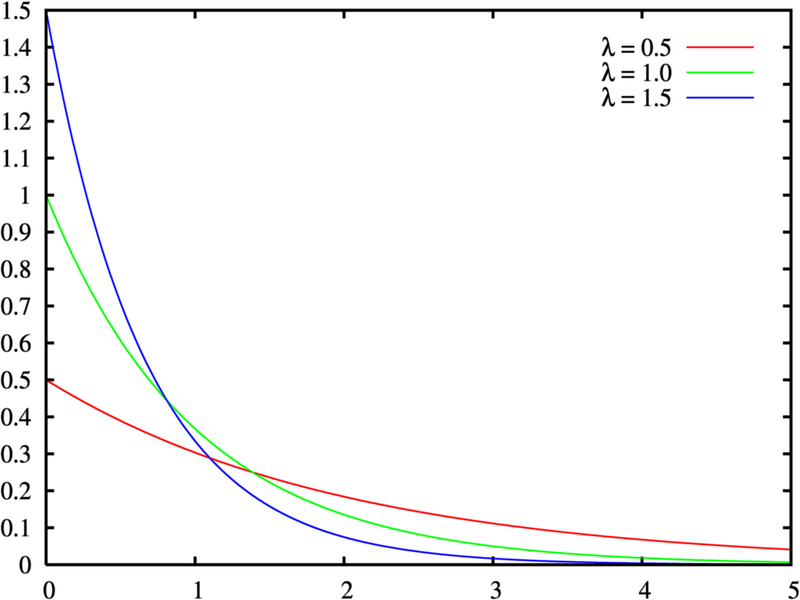

The exponential distribution can be used to model a Poisson process.
This can apply which some object, initially in State A, can change to state B with one constant probability per unit time.
The time at which the state actually changes is described by an exponential random variable with parameter &lambda . The graph above is essentially a plot of the probability that the object has remained in state A as a function of time step, for various values of &lambda .
In effect, the exponential distribution describes the time for a continuous process to change state.
In real world scenarios, the assumption of a constant rate (or probability per unit time) is rarely satisfied. For example, the rate of incoming phone calls differs according to the time of day. But if we focus on a time interval during which the rate is roughly constant, such as from 2 to 4 pm during work days, the exponential distribution can be used as a good approximate model for the time until the next phone call arrives. Similar caveats apply to the following examples which yield approximately exponentially distributed variables: